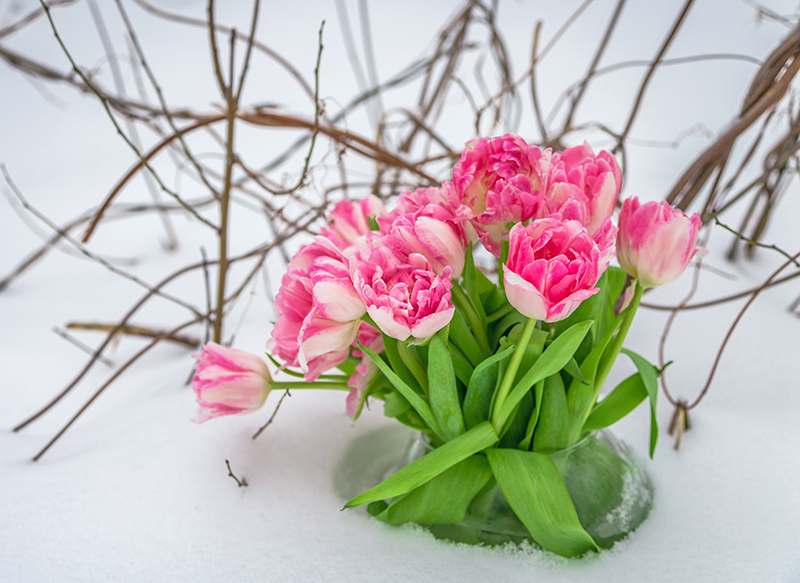More than just flowers: 7 facts about tulips
Posted on 02/09/2025
More Than Just Flowers: 7 Fascinating Facts About Tulips
Tucked within the swirling colors of spring, tulips have captivated people for generations. They're not just garden beauties or tokens of affection; tulips have a vibrant history, deep symbolism, and surprising uses. If you think tulips are just pretty blooms, think again! Discover seven intriguing facts about tulips that highlight their charm, significance, and versatility beyond their petals.

1. Tulips: A Symbol Steeped in History
Tulips have a historical significance that goes far beyond decorative gardening. Originating from Central Asia, particularly the Tien Shan and Pamir-Alai mountain ranges, tulips were first cultivated by the Ottoman Empire in the 10th century. The name "tulip" derives from the Persian word "delband", meaning turban, likely because of the flower's resemblance to the headwear.
- Tulip Mania: The tulip bulb craze--also known as Tulip Mania--gripped the Netherlands in the 1630s. These flowers became status symbols, and single bulbs were sold for the price of luxurious houses. Tulip Mania is often cited as the first recorded economic bubble in history!
- Tulips and the Ottomans: In the Ottoman Empire, the tulip was considered a symbol of paradise on Earth. It featured in art, poetry, and was a centerpiece at royal celebrations.
Fun Fact: The tulip is still celebrated annually during the "Tulip Festival" in Istanbul, a tradition dating back to the flower's heyday in the empire.
2. There Are Over 3,000 Varieties of Tulips
When people mention tulip flowers, they might envision the classic cup-shaped bloom. However, tulips come in a stunning variety of colors, shapes, and sizes. According to the Royal Horticultural Society, there are about 3,000 registered types of tulips derived from over 150 species.
Common Types of Tulip Varieties:
- Darwin Hybrid Tulips: Renowned for their large blooms and vivid colors, Darwin hybrids are robust and excellent for garden landscaping.
- Parrot Tulips: Identified by their feathery, ruffled petals and bold, multi-tonal shades, these tulips resemble the plumage of parrots.
- Fringed Tulips: As the name suggests, these have delicately fringed petal edges for an ornate appearance.
- Double Tulips: These blooms have extra petals, giving them a lush, peony-like appearance.
- Wild Tulips: These species are smaller and retain more of the original characteristics from their wild ancestors.
Tulip bulbs are available in nearly every color of the rainbow, except for real blue. Breeders work tirelessly to perfect new hues and shapes, making the world of tulips as diverse as it is beautiful.
3. The Surprising Edibility of Tulip Bulbs
While tulips are admired for their beauty, did you know that tulip bulbs are edible? During World War II and the Dutch Hunger Winter of 1944-45, extreme food scarcity in the Netherlands forced people to eat tulip bulbs to survive.
- Survival Food: Boiled or baked, tulip bulbs provided much-needed sustenance, though they're largely starchy and bland.
- Modern Use: Some daring chefs today use tulip petals for culinary decoration, adding color to salads and desserts. However, caution is necessary, as some parts of the tulip can be toxic if consumed in excess.
Important: If you're considering experimenting with tulip bulbs in your kitchen, be sure to buy bulbs designated as food-grade and consult with experts first.
4. Tulips Have Serious Symbolism
Beyond their cheerful appearance, tulip flowers are rich in meaning. They are often seen as symbols of love, rebirth, and charity. Each color has its own significance:
What Do Tulip Colors Mean?
- Red Tulips: Symbolize true love and passion, making them a popular choice for declarations of romantic interest.
- Yellow Tulips: Once associated with hopeless love but now regarded as symbols of cheerful thoughts and sunshine.
- Purple Tulips: These denote royalty and admiration.
- White Tulips: Often gifted as expressions of apology or forgiveness.
- Multi-Colored Tulips: A bouquet with various colors can express an array of emotions, from admiration to friendship.
Tip: Next time you send a tulip arrangement, choose colors that match your intended message!
5. The Netherlands: The Global Capital of Tulips
When it comes to tulip cultivation, the Netherlands reigns supreme. Known as "the flower shop of the world," this country exports over three billion tulip bulbs annually! Expansive fields bloom every spring, creating breathtaking landscapes that attract millions of tourists.
- The Keukenhof Gardens: Located near Lisse, Keukenhof is the world's largest flower garden with over 7 million tulips in bloom each year during springtime.
- Tulip Festivals: Every April, cities like Amsterdam, Haarlem, and Noordoostpolder host tulip festivals filled with parades, art, and photography.
- Economic Importance: Tulip farming is a key part of the Dutch economy, supporting both agriculture and tourism.
Remarkable: The Dutch not only excel at growing tulips but also play a leading role in tulip breeding, continually introducing new and unusual varieties to global markets.
6. Tulips Inspire Art, Culture, and Science
Throughout history, tulips have appeared as muses in art, literature, and creative expression. Dutch Golden Age painters like Rembrandt and Jan Brueghel immortalized tulips in lavish still life compositions. The flower continues to inspire crafts, fabric patterns, and public art installations today.
Tulips and Scientific Research
- Tulip Viruses: The vibrant streaks and color-breaking patterns on some tulips were discovered to be caused by viruses--leading to new fields of study in plant pathology and genetics.
- Hybridization: The effort to breed blue tulip varieties has spurred significant advances in plant hybridization techniques.
- Space Gardening: In 2015, Dutch tulips were grown on the International Space Station, showcasing their potential in space agriculture.
Did You Know? The rare and dazzling "Semper Augustus" tulip, with its streaks of red and white, was the most coveted during Tulip Mania and is still admired among tulip lovers.

7. Tips for Growing Tulips Successfully
Tulips aren't just reserved for professional growers--garden enthusiasts can cultivate these stunning blooms at home with a bit of knowledge and care. Here are a few essential tips to help you grow tulips successfully:
- Choose Quality Bulbs: Select firm, healthy bulbs without blemishes. Bigger bulbs often yield larger, more robust flowers.
- Planting Time: Fall is the best time to plant tulip bulbs--about six to eight weeks before the ground freezes.
- Optimal Depth: Plant bulbs about 6-8 inches deep, pointed end up, in well-drained soil.
- Sunlight: Tulips thrive in full sun but will tolerate partial shade.
- Water Wisely: Overwatering can cause rot, so ensure the soil drains well and water sparingly after planting.
- Aftercare: Let the foliage die back naturally after blooming; this process replenishes the bulbs for next year.
By following these steps, your garden can come alive each spring with vibrant tulip flowers, providing months of color and inspiration.
Conclusion: The Enduring Allure of Tulips
Tulips are more than just flowers--they're cultural treasures, historical icons, and botanical marvels. From their dramatic role in economic history to their culinary and artistic influence, tulips have earned their place as much more than springtime garden highlights. Whether you value them for their story, symbolism, or beauty, there's always more to discover about these fascinating blooms.
Start your own tulip journey today: Plant a few bulbs, visit a tulip festival, or delve into the world of tulip-inspired art, and you'll join centuries of admirers enchanted by these remarkable flowers.
Related Topics:
- The Most Popular Spring Flowers for Your Garden
- Understanding Flower Symbolism Across Cultures
- Tips for Growing Bulbs in Containers
Explore tulips--beyond their petals--and discover a world rich in history, diversity, and beauty.
Latest Posts
Making Poinsettias Last: A Comprehensive Guide
More than just flowers: 7 facts about tulips
The Enduring Appeal of 12 Long-Lasting Flowers






